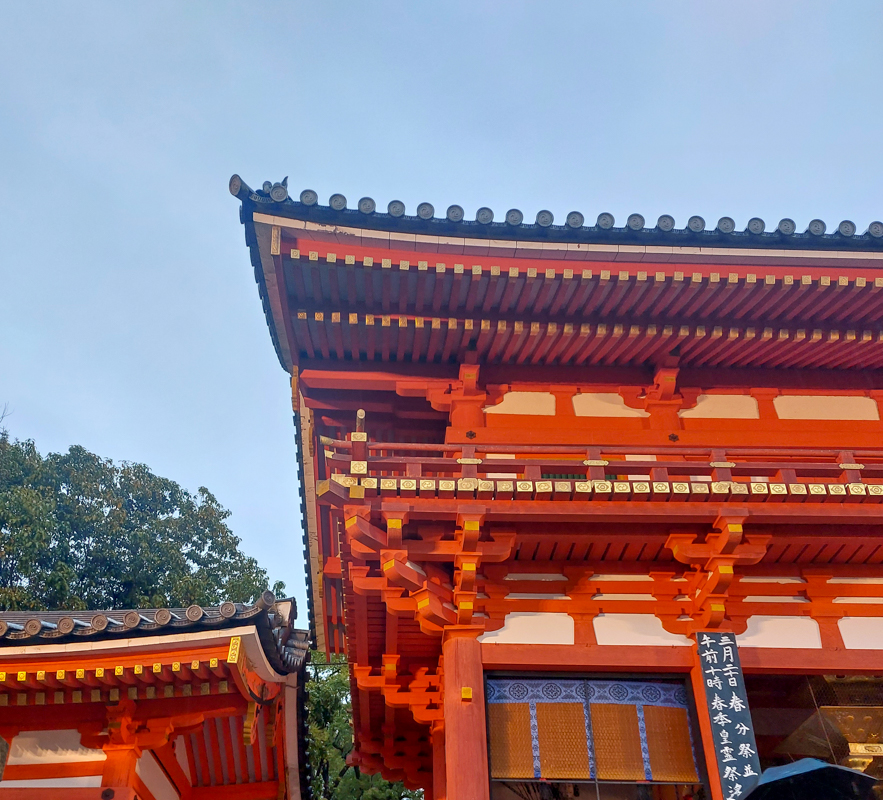Kyoto is one of the oldest cities in Japan and was even once the capital. So of course it is full of historic buildings, monuments and picturesque streets. Whilst it Kyoto is much smaller and more manageable that Tokyo it’s still helpful to look at things to do and see in Kyoto split out by area so you can plan your trip to make the most of your time.
Things to do in Gion and nearby
Visit Kiyomizu-dera
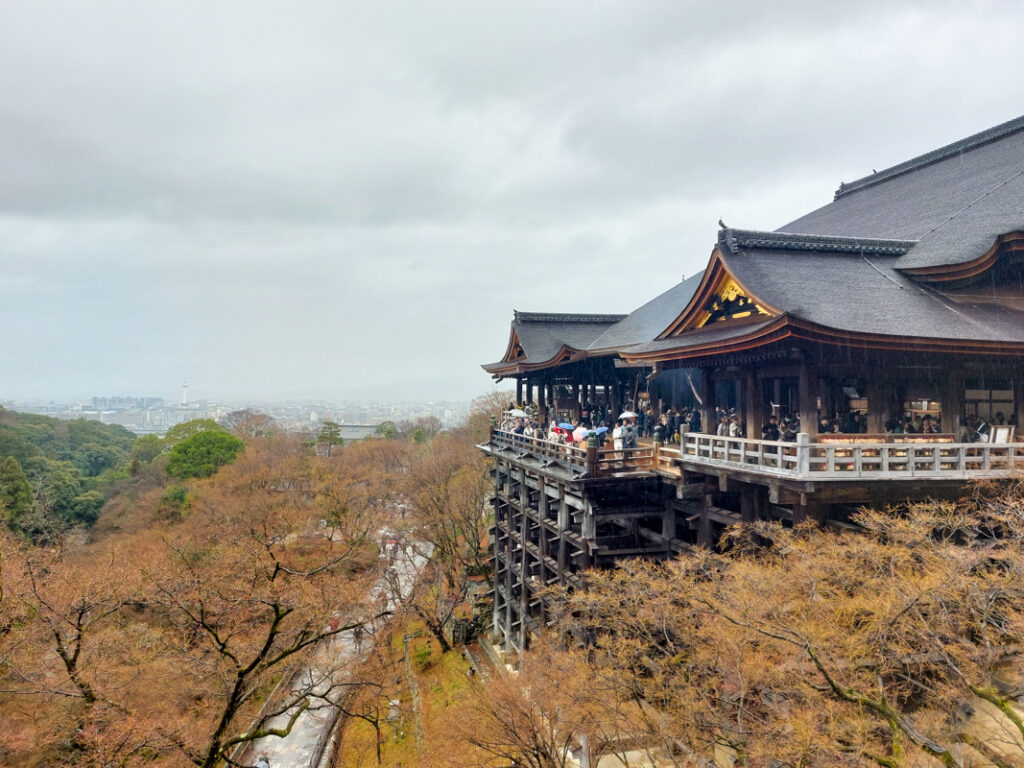
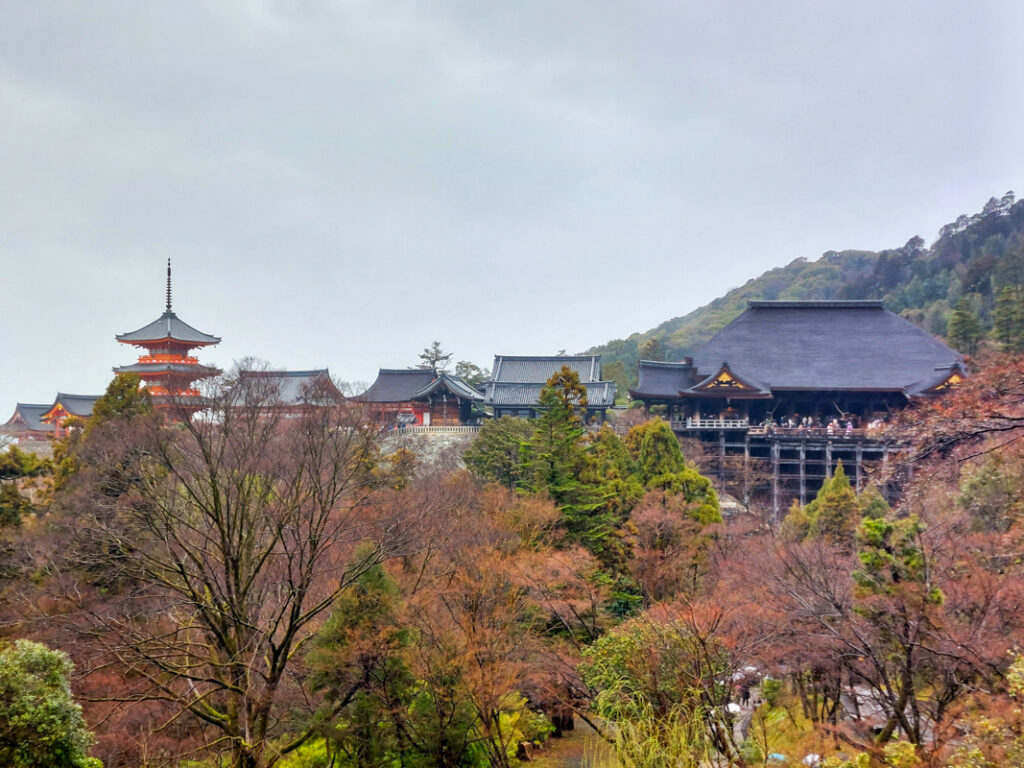
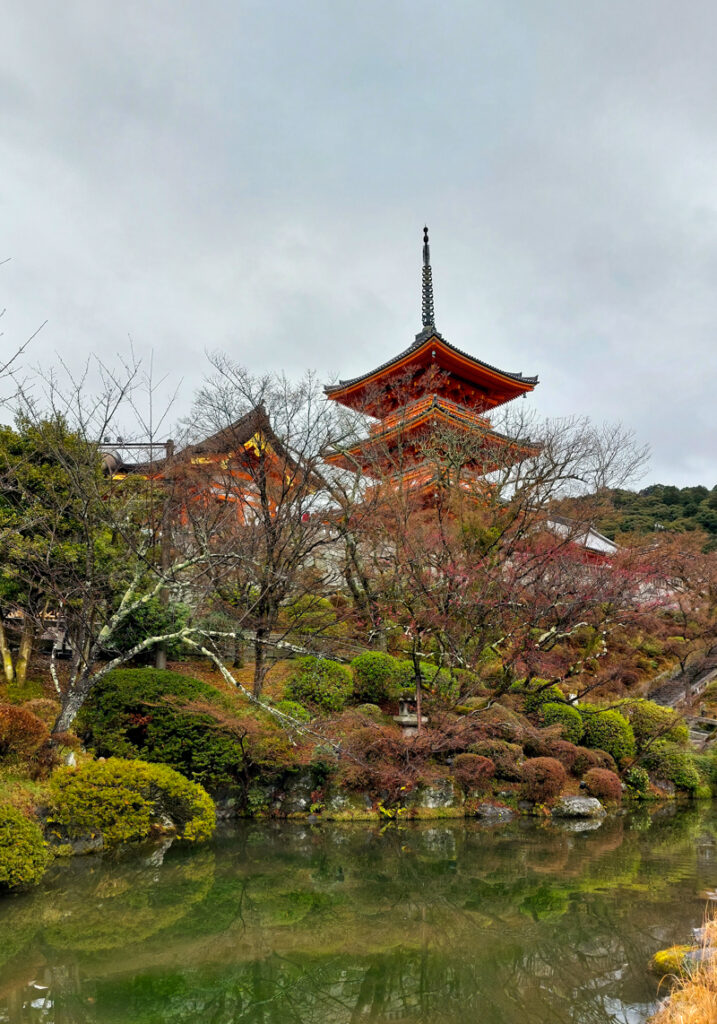
Kiyomizu-dera is an old buddhist temple built on a lattice of wooden stilts. The temple is on the edge of the city, nestled into the edge of the forest, giving the temple a stunning backdrop of trees. In spring you might find the temple surrounded by pink blossom trees or crisp orange leaves in Autumn. Whatever the season, it’s well worth a visit! There are a few other pagodas in the grounds and various view points so have a good wander around. Kiyomizu-dera is one of several historic monuments in Kyoto with UNESCO World Heritage status.
Stroll through Otani Cemetery
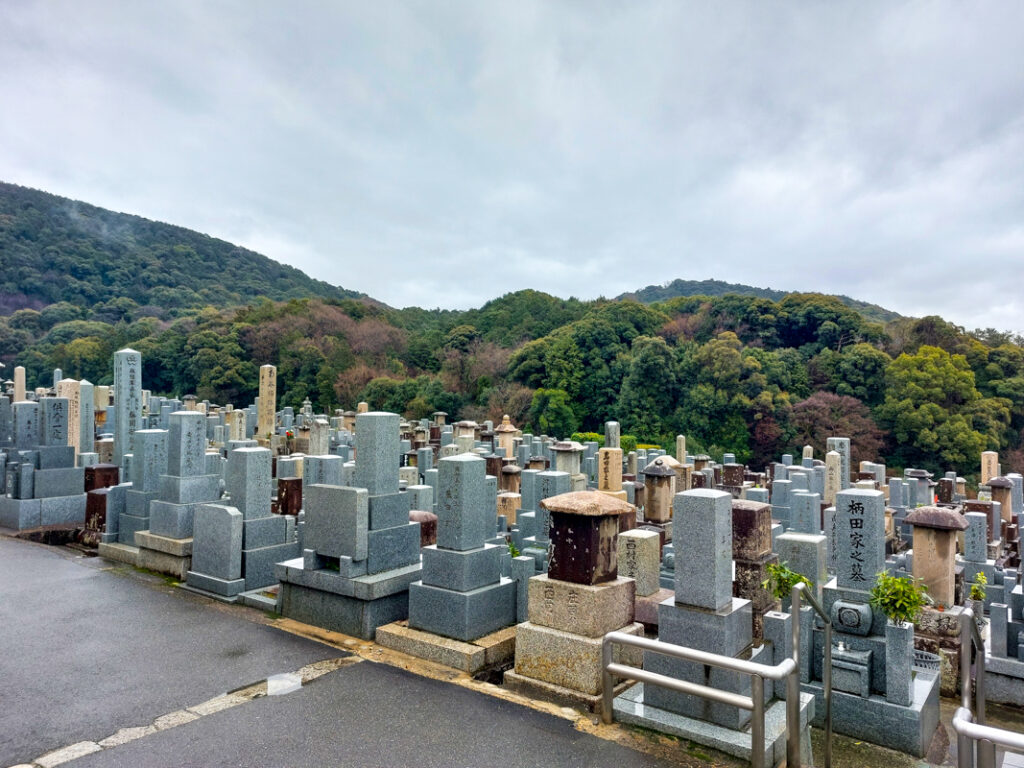
We accidentally walked through Otani Cemetery on our way to Kyomizu-dera. It’s a huge site that seems to sprawl from the edge of the city to the woods. It’s an interesting place to stroll through as you’ll suddenly feel completely removed from the hustle and bustle of the city.
Explore Sannenzaka and Ninenzaka
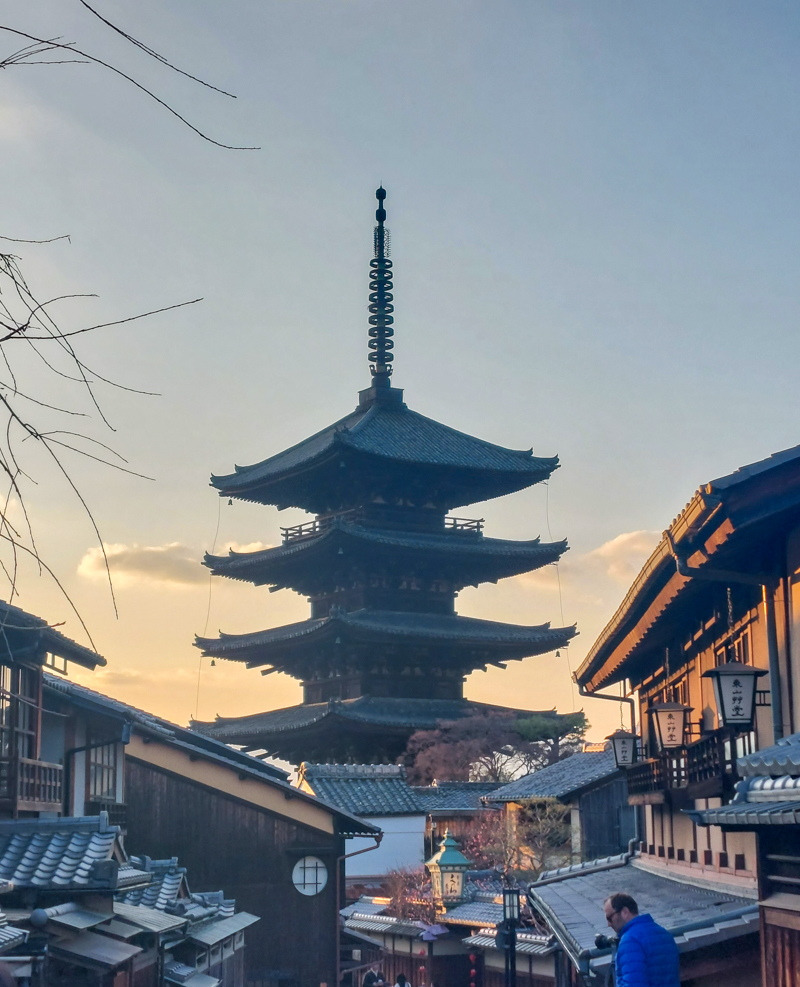
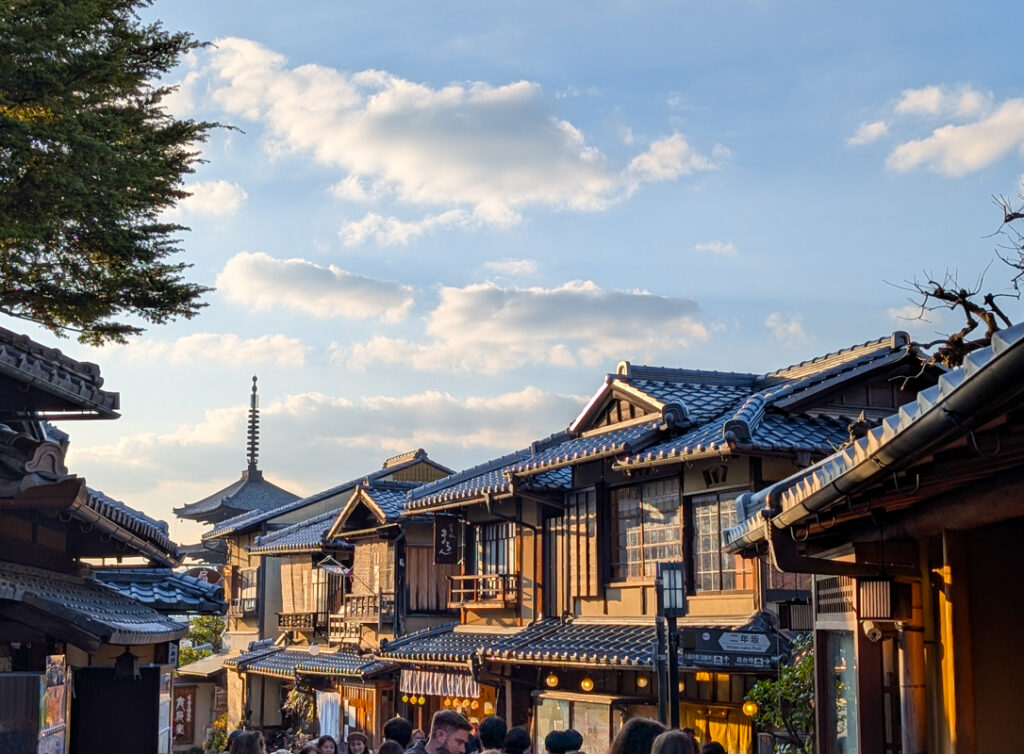
Sannenzaka and Ninenzaka are two of the most picturesque streets in the older part of Kyoto. It’s often super busy here so explore more of the side streets or arrive early in the morning for fewer crowds. Along the streets, you’ll find lots of cafes and souvenir shops. You can capture an amazing view of the Yasaka Pagoda around here, it’s also great for sunset but possibly at its busiest then!
Visit Yasaka shrine and Maruyama Park
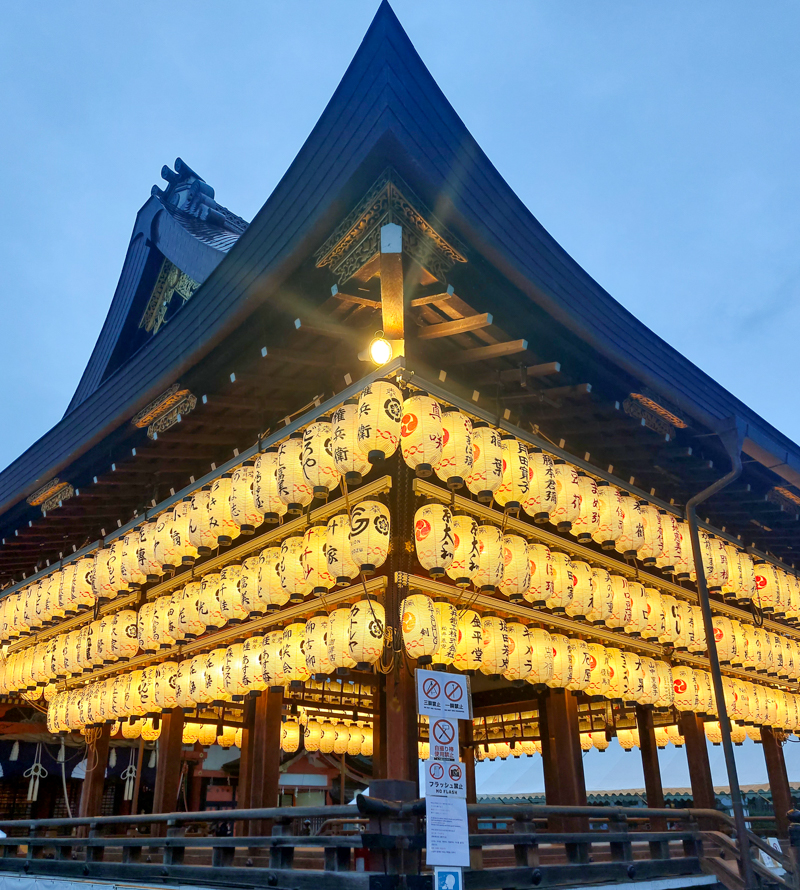
Yasaka Shrine is a shrine over 1000 years old. The edges of the temple are lined with lanterns, each donated by a local business. Visit at night to see all the lanterns lit up! The neighbouring Maruyama Park is a great spot to have a little break from all the walking you’ll likely be doing in Kyoto! Grab an ice cream and enjoy the blossom trees.
Stroll along Hanamikoji-dori
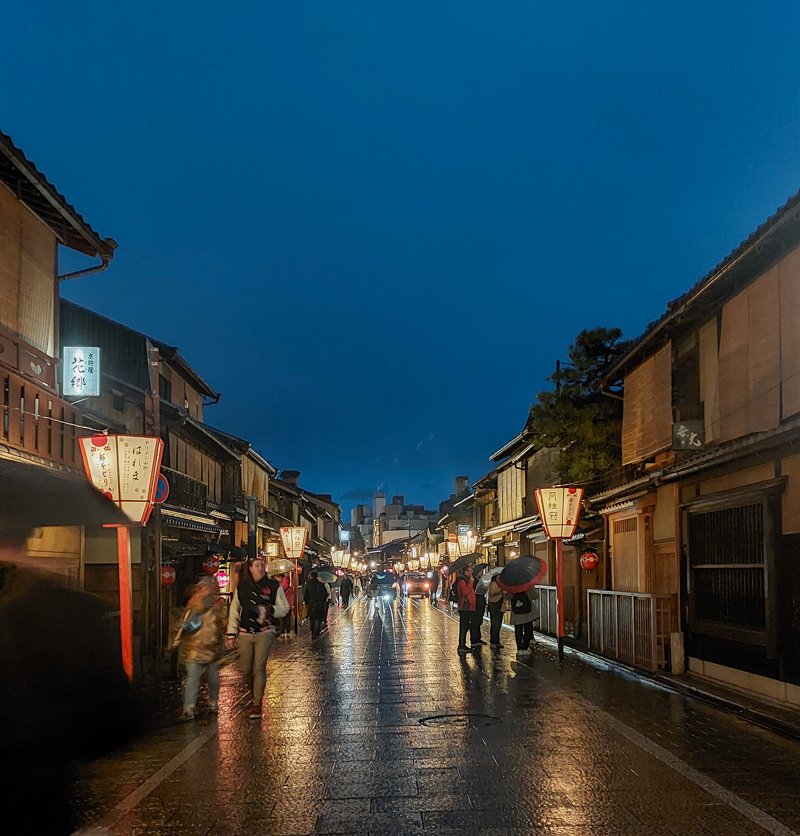
Hamamikoji-dori is a picturesque street lined with old wooden buildings housing restaurants, shops and tea houses. For the nicest part of the street, visit the end south of Shijo-dori (the main street running through Gion towards Yasaka Shrine).
Go for dinner along Pontocho
Pontocho is another popular street in the area. The alley is known for bars and restaurants so it’s a great spot to grab some dinner. Choose a restaurant on the east side of the street for views over the river.
Explore Nishiki Market
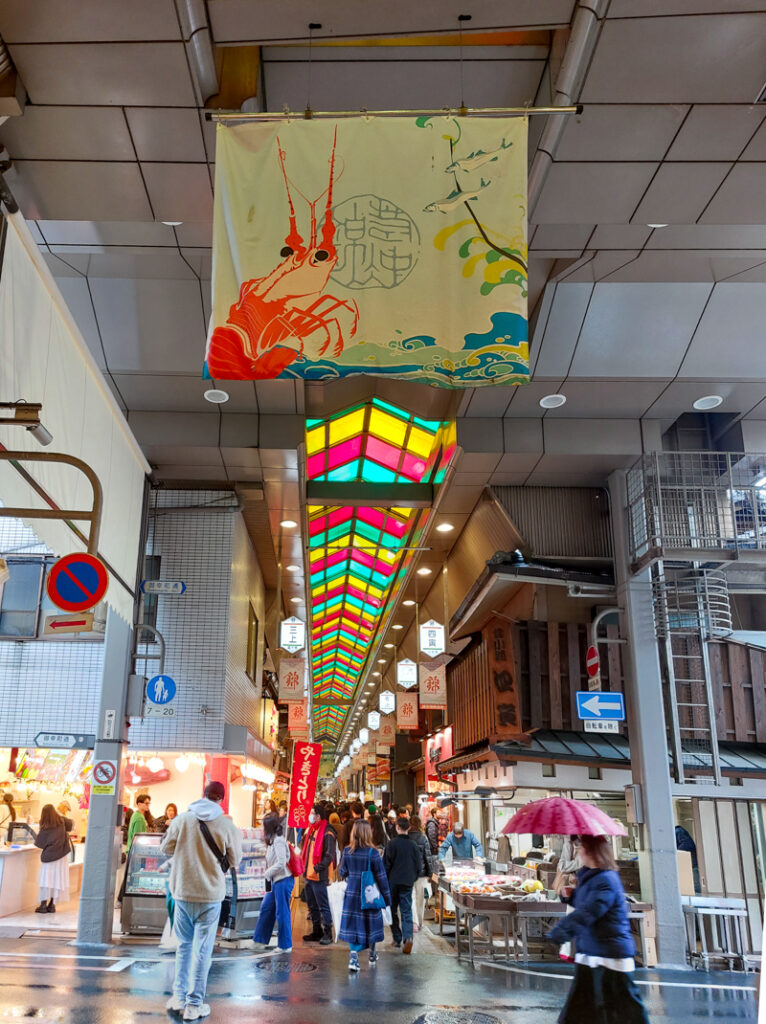
Nishiki Market is a huge indoor market in Kyoto with over 100 shops, food stalls and restaurants. Definitely worth exploring and sampling some new foods.
Visit the Samurai Ninja Museum
Not far from Nishiki Market, you’ll find a fairly small museum specialising in Japanese warriors. I wouldn’t say this is a must-visit but if you are particularly interested in samurais and ninjas or are travelling with children, it’s worth a try. We visited to hide out from the rain for a little while but did learn a fair bit about this period of Japanese history. The museum is tour-led so you don’t get too long to look at the artifacts. There is also an interactive element where you’ll learn to throw ninja stars!
Things to do in Arashiyama, Kyoto
Visit Arashiyama Bamboo Forest
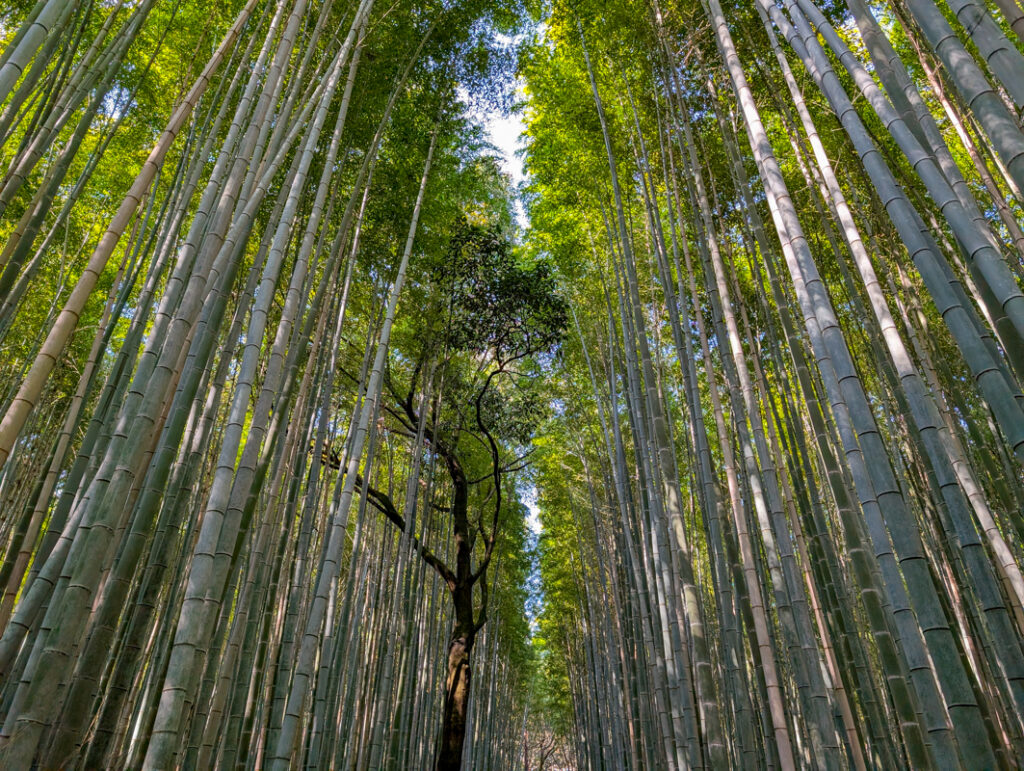
If you’ve started looking for things to do in Kyoto on Instagram or Tiktok, you’ll have likely seen a bamboo forest pop up. Arashiyama Bamboo Forest is perhaps the most famous but I think this is overhyped. It’s actually a really short walkway through bamboo and it gets super busy. If you’re going to go, go early in the morning, we visited at 9am and it was okay but walked past again at 11am and it was packed! There are other things to see in the area, including a much quieter bamboo walk (see below!) and it is right by the station so if you’re in the area you might as well take a look.
Explore Jojakkoji temple
Making your way north through Arashiyama, there is a series of temples hidden amongst quieter, suburban streets. Jojakkoji is one of the first temples you might come across. It dates back to the 16th century. It is surrounded by maple trees and luscious gardens.
Visit Gioji temple
Gioji temple is another quiet temple hidden amongst the trees. The gardens of Gioji temple are known for the moss covered ground.
Discover Adashino Nenbutsuji temple
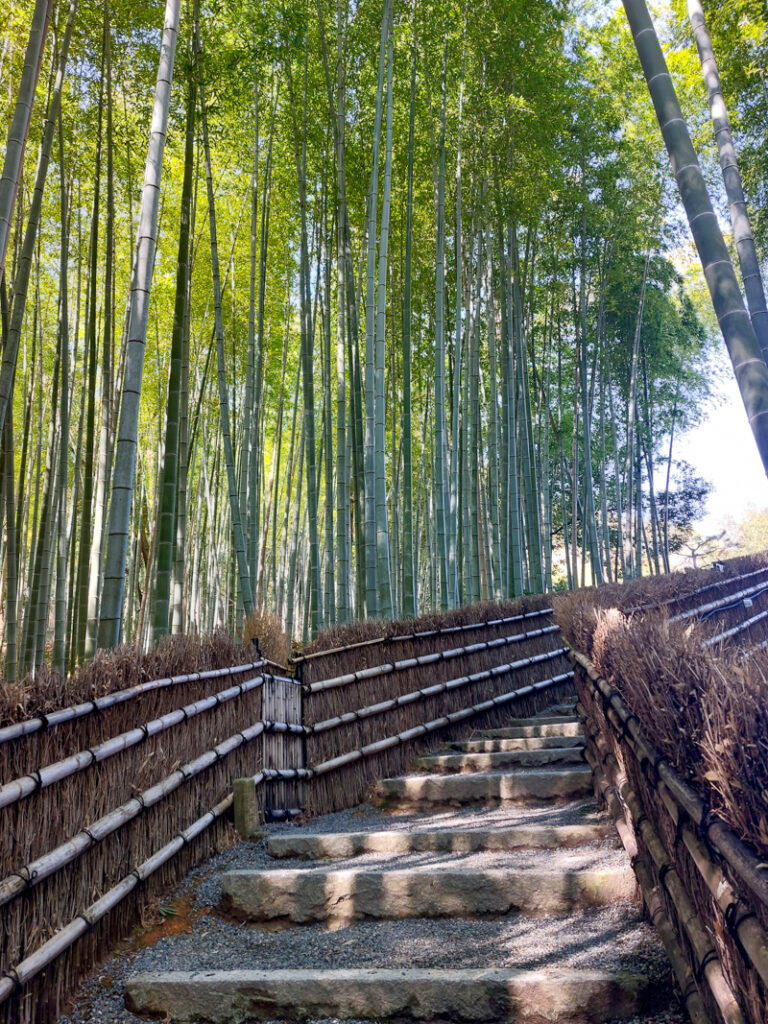
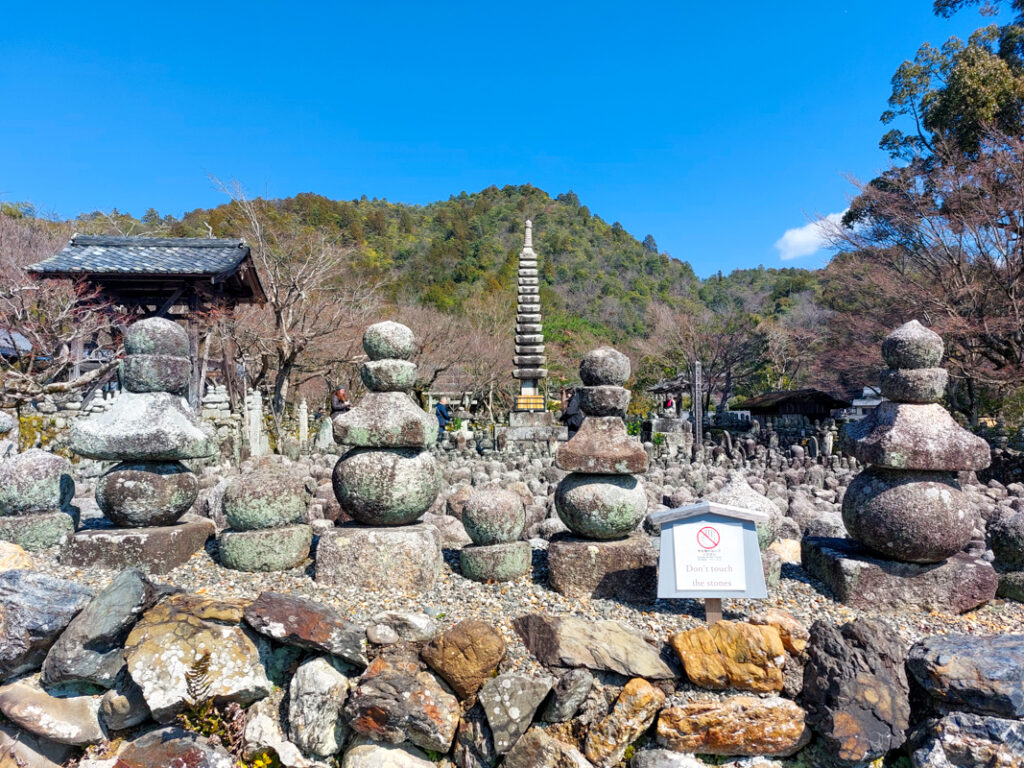
Adashino Nenbutshuji temple is known for its 8,000 stone statues. These were each created hundreds of years ago to remember the souls of those who died without family. Once you have passed through the field of stone figures, you’ll find the temple has its own bamboo forest walkway. This one is much much quieter than the Arashiyama Bamboo forest, even in the middle of the day.
Visit Seiryoji temple
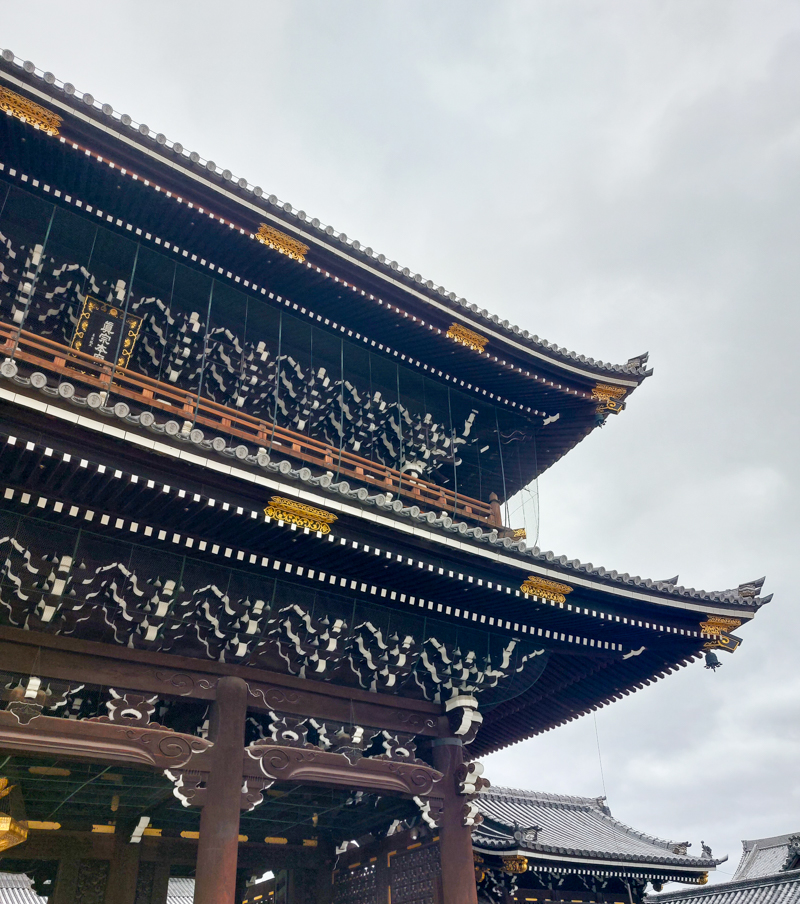
Last temple for Arashiyama and this one is the biggest on this little list. This one has all the classic features of a Japanese buddhist temple: a huge highly decorated gate, a pagoda, a large hall, gardens and blossom trees.
See the Kimono Forest
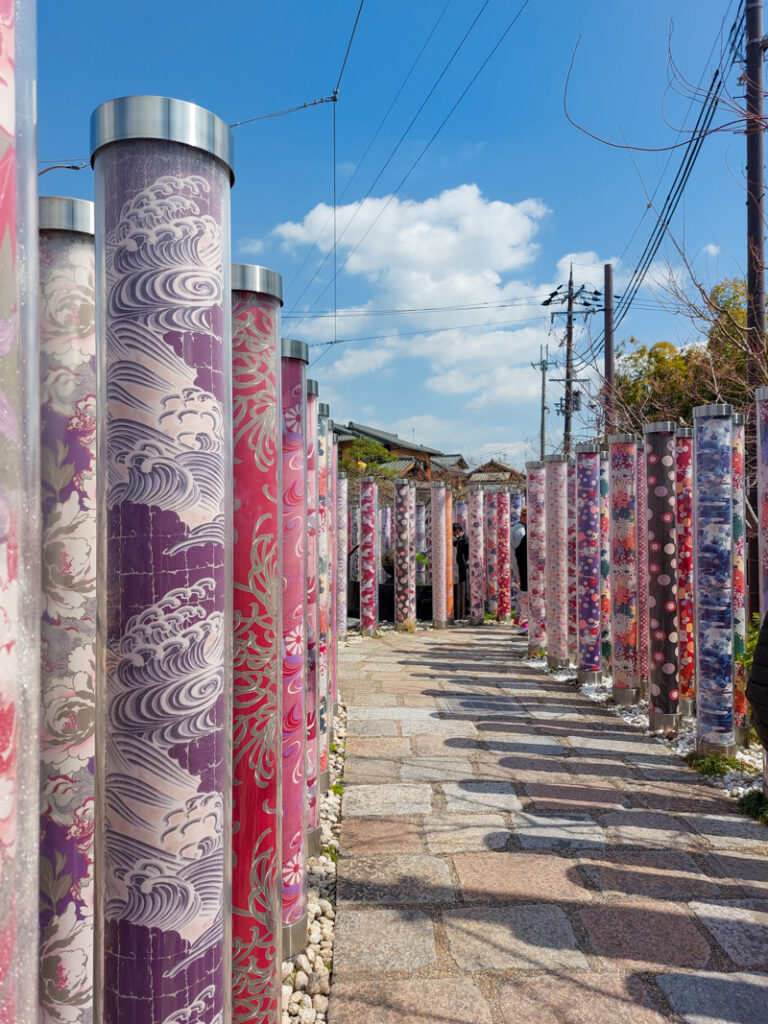
The kimono forest at Arashiymama station takes inspiration from the nearby bamboo forests. But instead of bamboo, the path is lined with glass pillars containing fabric from kimonos. In total there are 600 pillars showcasing textiles dyed using the traditional Kyo-yuzen technique.
Take a trip along Sagano Scenic railway
Escape the busy city with a trip on the Sagano Scenic Railway. Departing from Torokko Arashiyama station, the old fashioned train journey takes you along a track lined with forests and the Oi River. After 25 minutes, the train terminates at the Torokko Kemeoka station. From there you can get a train or bus back to central Kyoto.
Experience the Hazugawa River Cruise
An alternative to getting the train back from Kameoka – you could take a leisurely boat ride on the Hozugawa River Cruise. This takes around 2 hours, you’ll be aboard a traditional flat-bottom wooden boat, guided by oars and bamboo sticks.
Things to do in Central & North Kyoto
Visit Kinkaku-ji, the Golden Pavillion
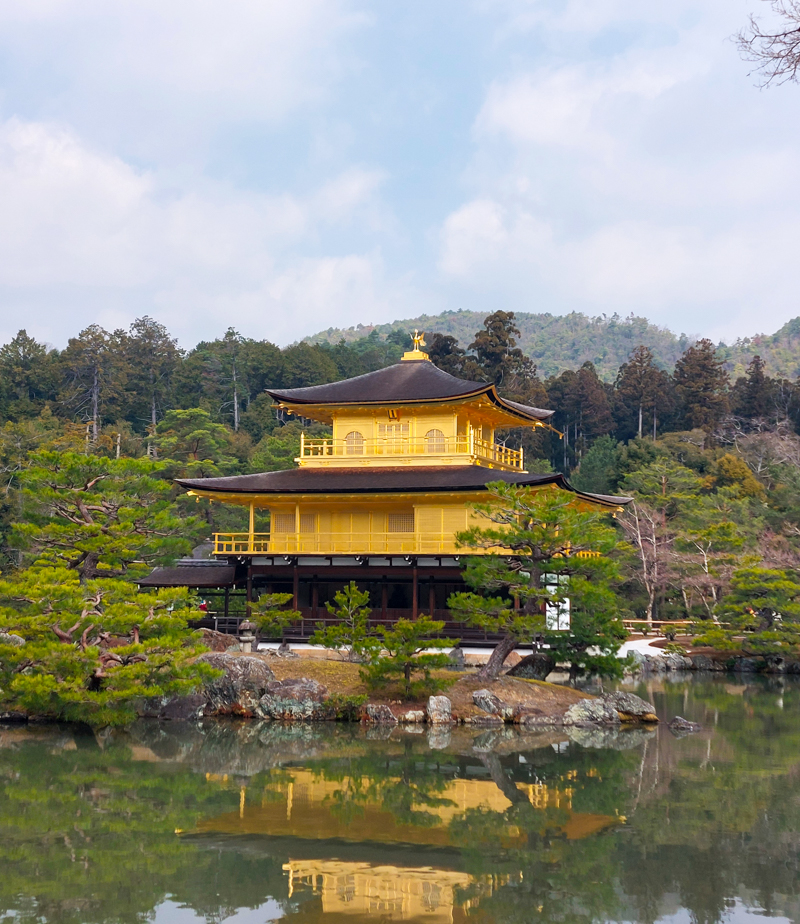
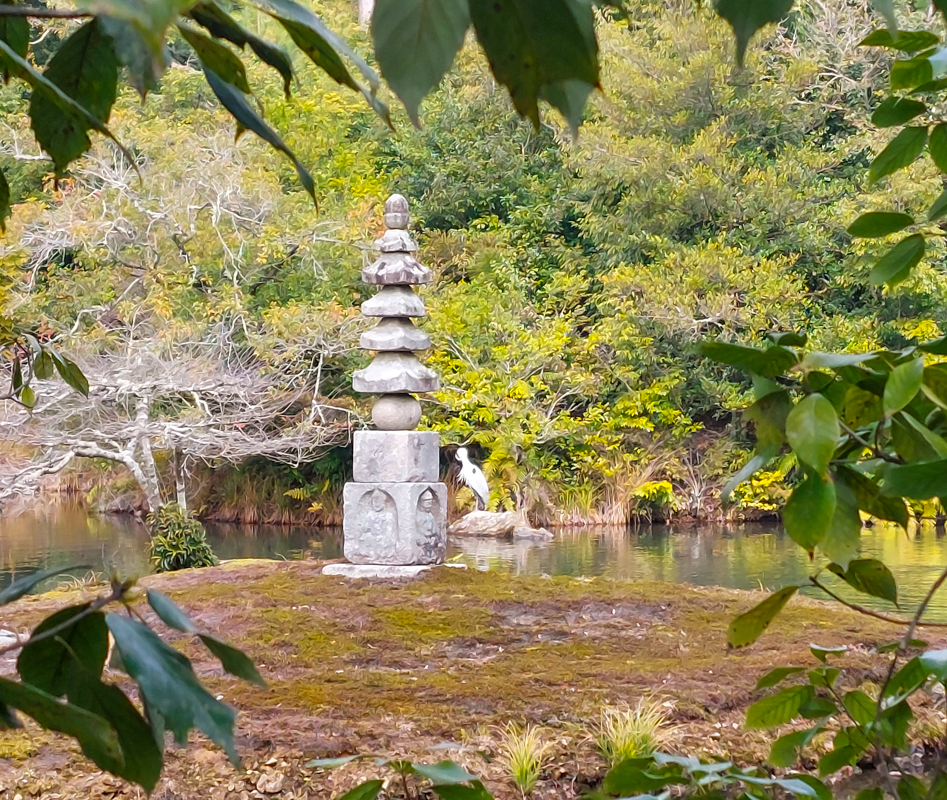
Kinkaku-ji is a spectacular looking building with its top two floors coated in gold leaf. The origins of the temple date back hundreds of years but previous iterations have been destroyed by warfare and fires. The current structure was rebuilt in 1955. You can’t enter the temple but there is a lovely walk around the gardens and the lake.
Explore Nijo Castle
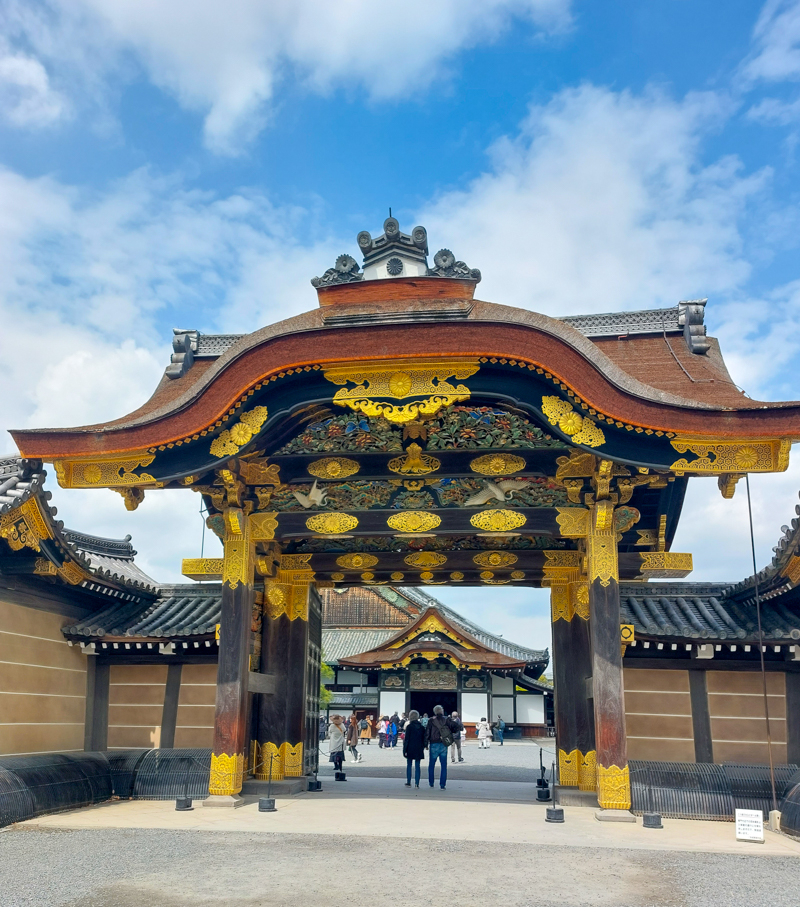
Nijo Castle, in central Kyoto, is a 400 year old castle and a UNESCO World Heritage Site. The exhibit inside the castle mostly covers art, particularly murals decorating the walls, rather than the history of the castle and its former inhabitants. One special feature of the castle is the nightingale floors. So called because of the sing-song creaks and whistles the floorboards make when you step on them. This is supposedly by design to warn of intruders.
Visit the Imperial Palace
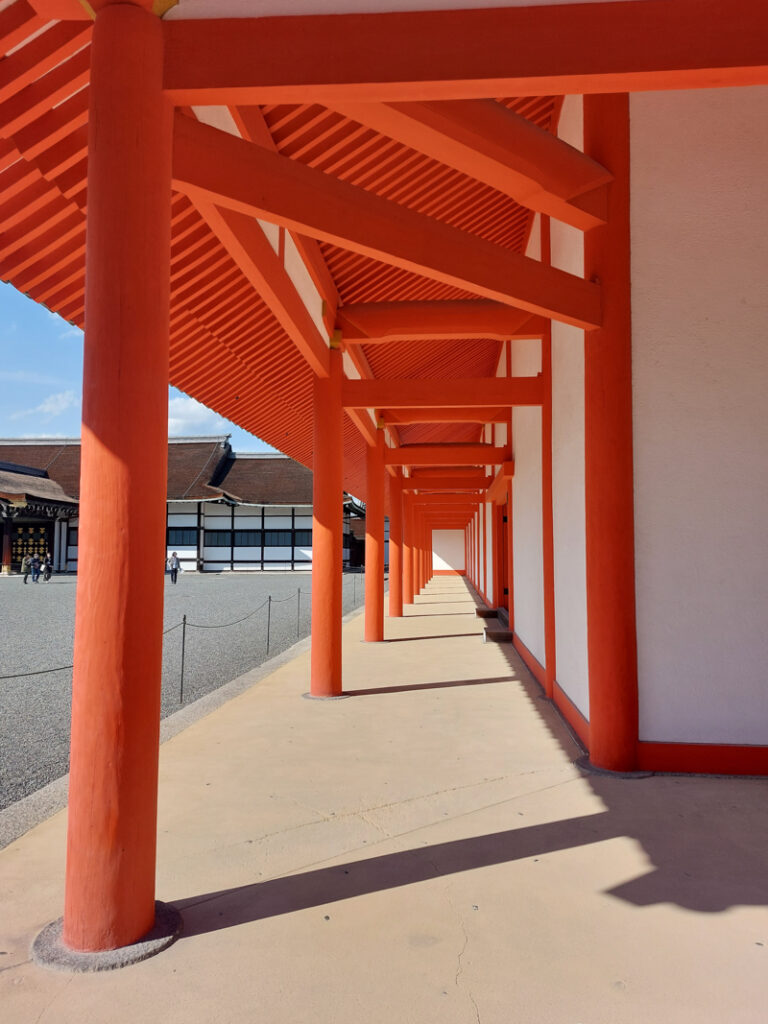
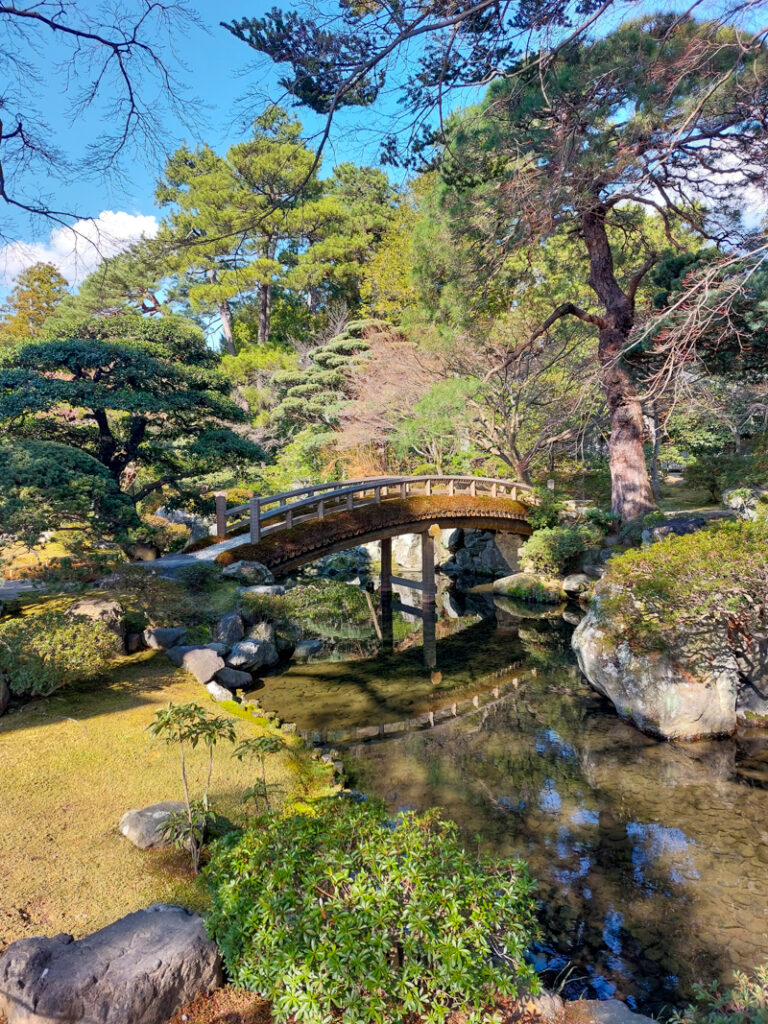
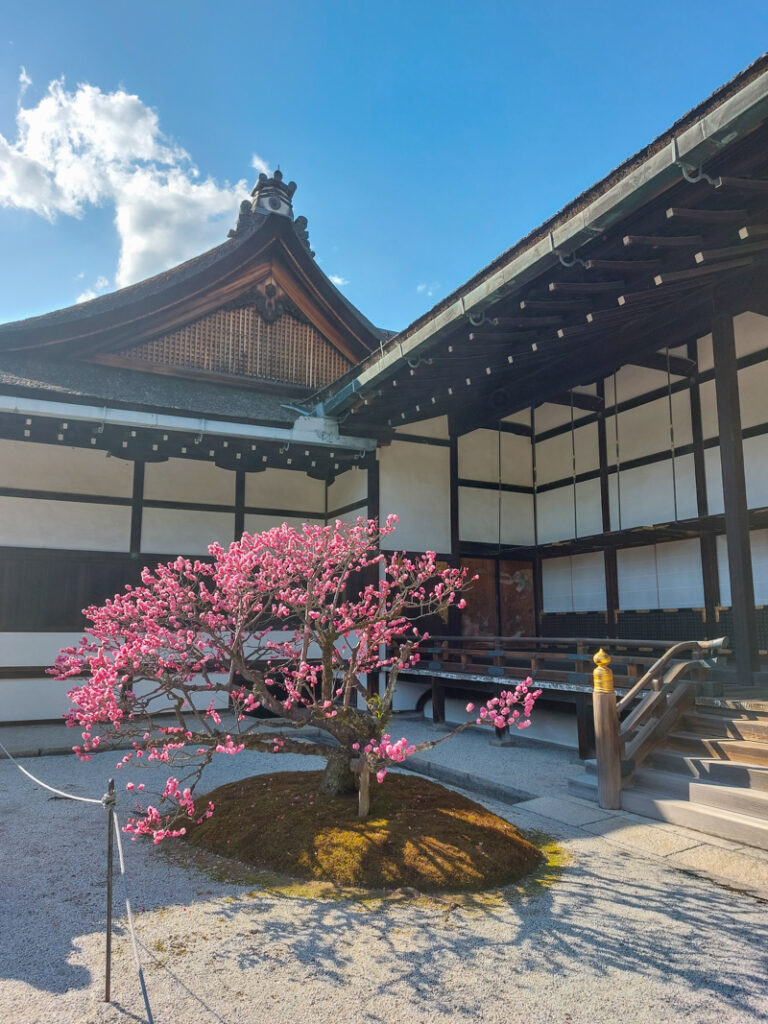
Kyoto’s Imperial Palace is situated in Imperial Park. You can take a guided tour to learn more about the palace but otherwise there isn’t too much to see here. You can’t go inside the buildings but you can walk around the perimeters and in the gardens.
Things to do in other areas of Kyoto
Explore Fushimi Inari Taisha
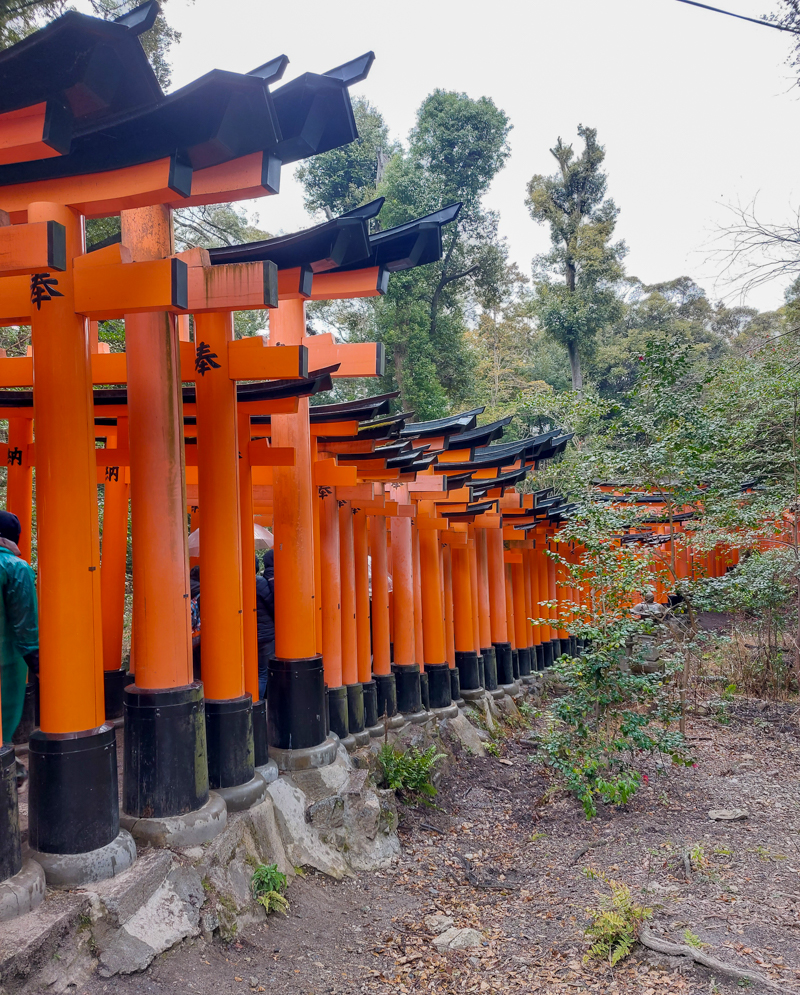
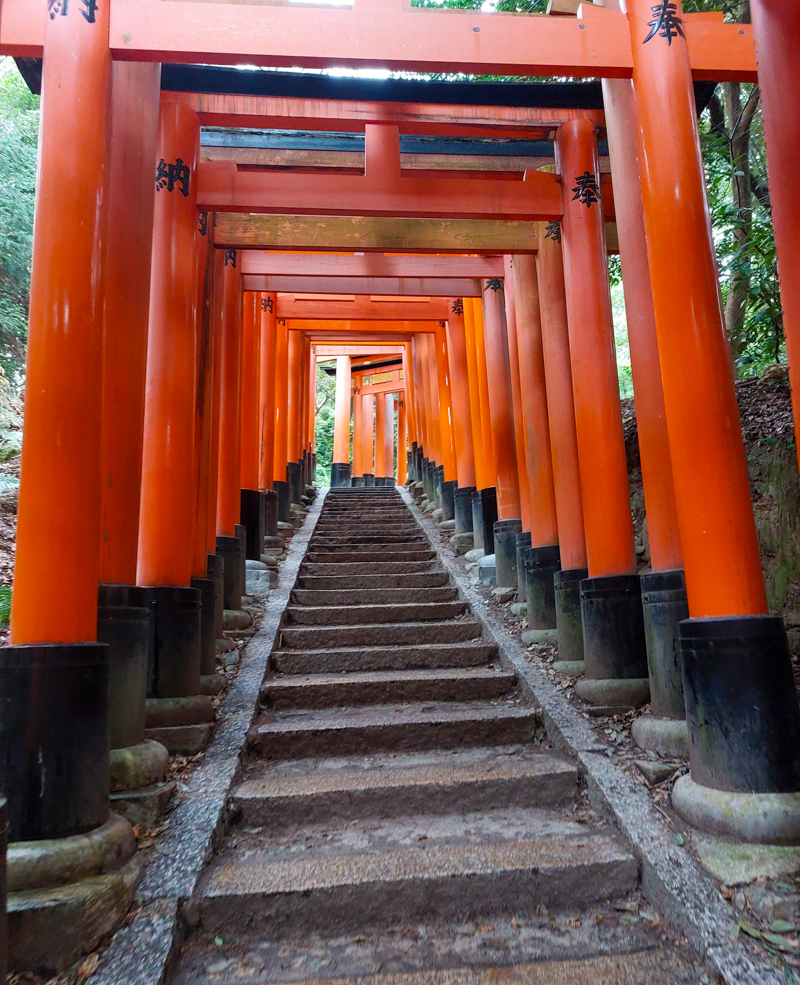
Fushimi Inari is one of the most famous attractions in Kyoto, known for its 1000 red torii gates. From the shrine’s main hall there are a few trails that lead up into the mountain, each with the red archways guiding your path. This area can be super busy but if you keep following the trails further uphill, the crowds soon thin out and you’ll almost have the place to yourself! It’s definitely worth doing the full hike, its much nicer at the top without the crowds! There are few places to stop at viewpoints and cafes on the way up. The whole route up and down took us around 90 minutes.
Wander along the Philosopher’s Path
The Philosopher’s Path runs along a canal with lots of blossom trees. If you’re visiting in Spring and you’ve timed it right, this could be a very picturesque walk! Either side of the canal, there’s a mixture of shops, restaurants and houses.
Hike from Kurama to Kibune hike
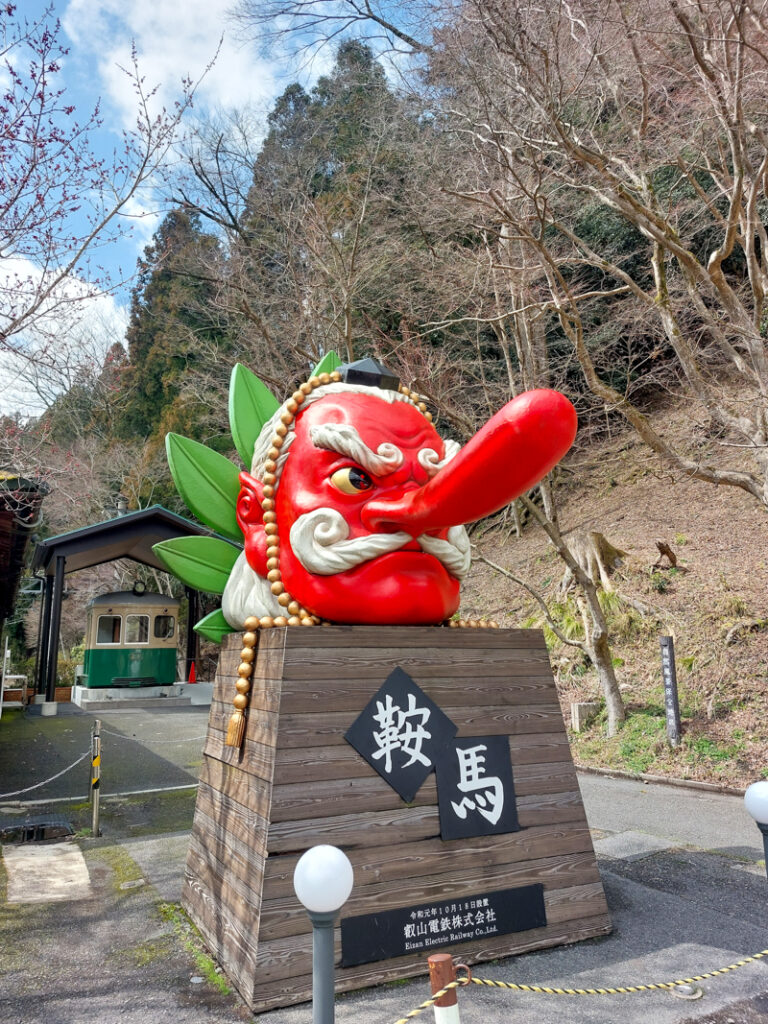
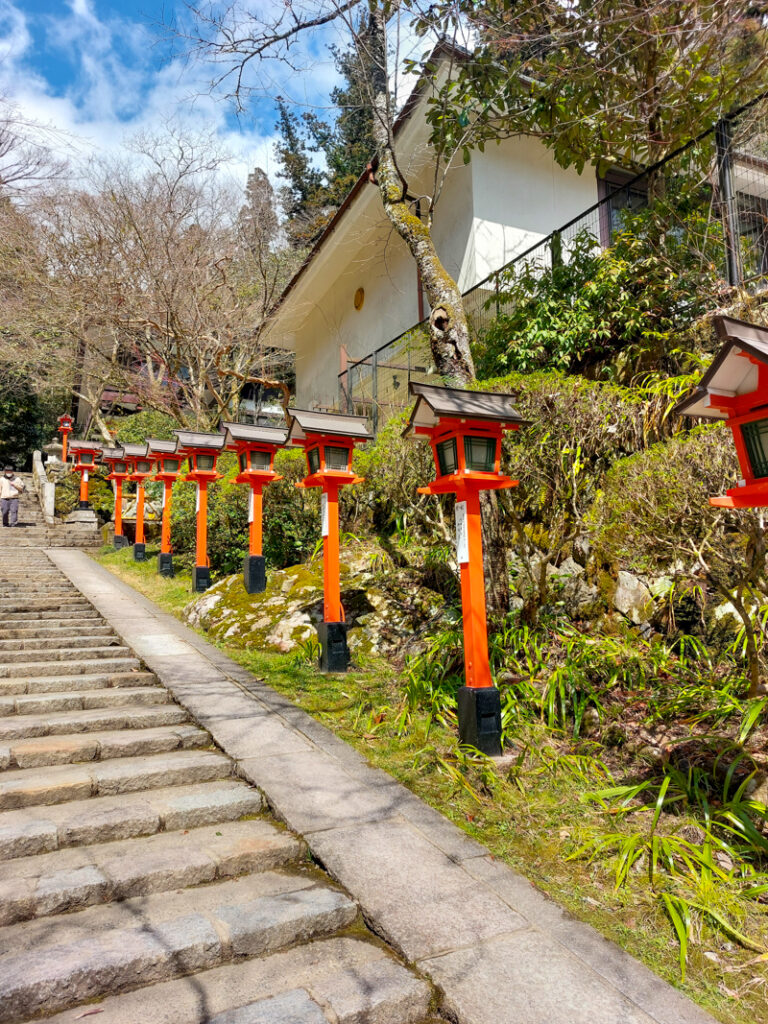
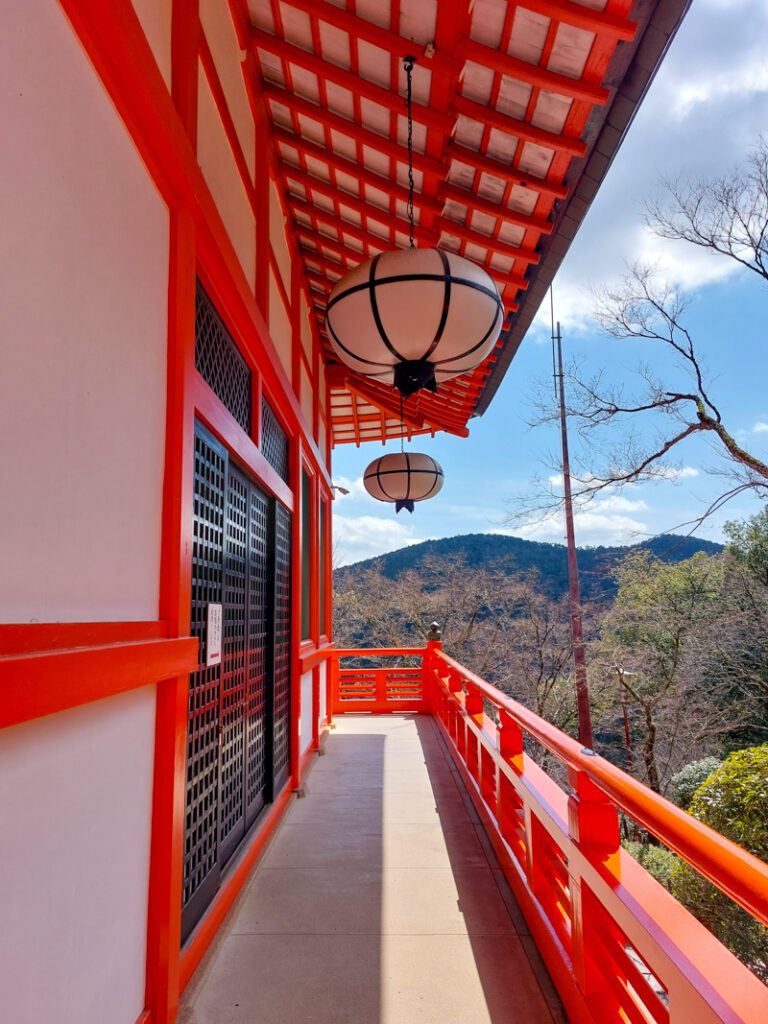
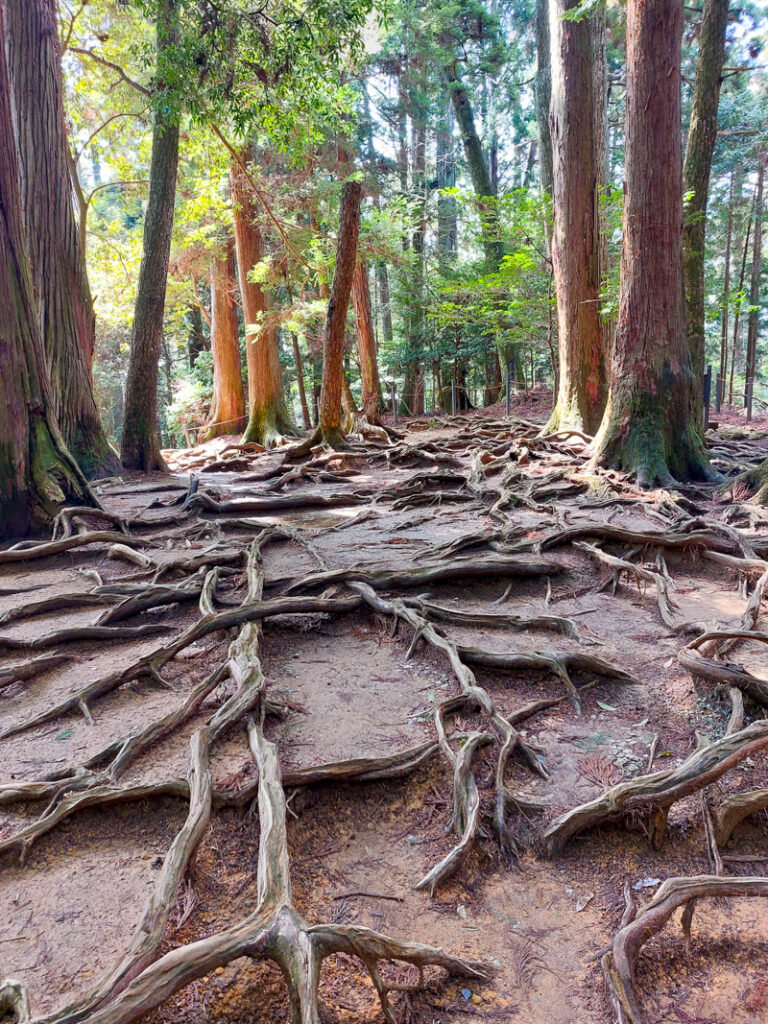
If you want to get out of the city and see more of the rural side of Japan without travelling too far, this half day trip is ideal. You can easily get a train up to Kurama to start the hike. From here, you’ll walk through the mountains, past shrines and temples to Kibune. From there you can either get the train back or re-fuel at one of the restaurants near Kibune Station.
You can also do the walk the other way around, starting at Kibune and heading to Kurama, this way you can end the walk with a dip in an onsen – a Japanese hot spring.
Either way the walk takes around 2-3 hours. Here are the full trails for each direction:
Take a day trip
Both Osaka and Nara are super easy to get to from Kyoto in less than an hour by train. If you have a spare day or two, I’d highly recommend planning in a day trip to experience a different city.

